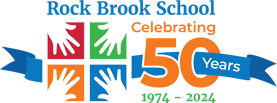In April 2020, Governor Murphy issued an executive order that became P.L.2020, c.27. This law provides for the continuity of instruction in the event of a public-health-related district closure so that LEAs can utilize virtual or remote instruction to satisfy the 180-day requirement pursuant to N.J.S.A. 18A:7F-9. Read more…
Author: admin-rb
Updated COVID-19 Protocols – Effective September 1, 2022
As COVID-19 begins a transition from a pandemic to endemic status, schools across New Jersey and the country have begun a focus on full-time uninterrupted on-site instruction. Please know that the COVID-19 vaccination, including booster doses for those eligible, remains the most critical strategy to prevent severe illness, protect students and staff, and reduce interruptions to on-site learning. Read more…
Testing for Lead in Drinking Water for All Education Facilities – April 2022
Rock Brook School completed Testing for Lead in Drinking Water for All Education Facilities; N.J.A.C.6A26-1.2. All samples taken were well below the action level (AL) of 15 µg/l (parts per billion [ppb]).
Rock Brook School was featured in Town Topics “Back to School” edition
The article provides a brief history of the school and highlights the many programs and offerings. Click below to read the full article:
New Director Announced
Dear Rock Brook Community,
On behalf of the Rock Brook School Board of Trustees, I am pleased to announce the appointment of W. Glenn Famous as the next Executive Director of Rock Brook School.
The Board has engaged in a thorough and thoughtful process to find an outstanding candidate to replace Mary Caterson who will be retiring at the end of the school year. Glenn has had a long career in public education serving as Principal in several elementary and middle schools in South Brunswick, New Jersey with a strong record of accomplishment. His commitment to children and their families, as well as to the staff who support them, is well recognized. His leadership, creativity and problem solving skills will add to our continuing efforts to help our students reach their full potential.
The formal transition process will start April 1 with Glenn and Mary working together through the end of the school year. We look forward to having Glenn join the Rock Brook family and will be planning opportunities for all of you as stakeholders to meet him. This is an important next step for Rock Brook and we look forward to the future of our program and our continued commitment to the children and families that we serve.
Sincerely,
Rick Sugam
Chairperson
Rock Brook School Board of Trustees
Social Communication Disorder vs. Autistic Spectrum Disorder
Children who are experiencing social problems may appear to have Autistic Spectrum Disorder (ASD), but some of these children fit the criteria for Social (pragmatic) Communication Disorder (SCD). Children with either ASD or SCD often have a corresponding Developmental Language Disorder, which also needs to be considered during the diagnosis and treatment process.
The most clearly defining factor between ASD and SCD is that those children who receive the Autistic Spectrum diagnosis show or have a history of restricted and repetitive patterns of behaviors, activities or interests. These might include having difficulty with transitions, lining up toys, extreme focus on a specific topics, etc. Children with SCD have social interaction and language difficulties that are similar to those that kids in the spectrum have without the restricted and repetitive patterns of behavior.
The approach to treatment can be similar and should support the social communication challenges of the children in varied situations. It is important to include peer opportunities and teach the peers how to initiate and maintain interaction with children who have social communication difficulties. This provides an opportunity to understand the strengths of friends with ASD and SCD and appreciate them.
(For more information see the article in the ASHA Leader magazine date April 2018)
Emotional Regulation/Dysregulation
Emotional regulation refers to the response to ongoing demands of experience with a range of emotions that is socially acceptable and flexible. Emotional regulation is a complex process and something many of our students work on daily in the Rock Brook School Community. When our students are more emotionally regulated, they are better able to engage with other people and are more available for learning. Sometimes they are tired and hungry or not feeling well which we can take care of. Other times they are upset about something they can or cannot express and we try to figure it out and talk about it. Sometimes it is due to internal responses that result from their own neurological make-up with no clear antecedent.
We work on emotional regulation and working through situations at school in a variety of ways, and three main approaches include: 1) Provide processing time; 2) Use simplified language; and 3) Provide visuals. Here are some specific strategies that are in no specific order:
1) Model what is expected as it decreases anxiety and increases predictability.
2) Use the phrase “First…then….. (“First finish writing three sentences…then take a break”).
3) Give a choice “Now or one minute…” (Usually the kids pick one minute…)
4) Show how many (egg, math problems to complete”) or how long (“Work for five more minutes”) and use a timer
5) Use the phrase “I start…you finish…”
6) Verbalize the rule for the situation.
7) Use Video modeling.
8) Simple tasks : give the child something to do when they are upset to calm them down that is an easy task such as sorting objects, squeezing play dough etc.
9) Use Incentive/Token Charts
10) Visual Schedules and Social stories. We find some strategies work better with specific students and then we have to switch them around and try something new. We have learned what works and what doesn’t and when we have to make changes and we keep trying!
Mother’s Day Plant Sale
May 10th & May 11th
Stop by and pick up some beautiful flowers for your loved ones!
Testing for Lead in Drinking Water for All Education Facilities
Rock Brook School completed Testing for Lead in Drinking Water for All Education Facilities; N.J.A.C.6A26-1.2 and 12.4 by July 1, 2017 as required. All samples taken were well below the 15ug/L for lead. For more detailed results, contact the school.
Wacky Wednesdays at Rock Brook
WACKY Wednesday Crazy Hair – Click here to see a collage of WACKY CRAZY HAIR 3-1-17
Wacky Wednesday Rainbow Picture 3-8-17

WACKY Wednesday Music Day – Click here to see a collage of some Music Day Shirts 3-22-17
Wacky Wednesday Hat Day – Click here to see a collage of Crazy Hay Day 3-29-2017
Wacky Wednesday PJ Day – Click here to see a collage of PJ Day 4-5-17
